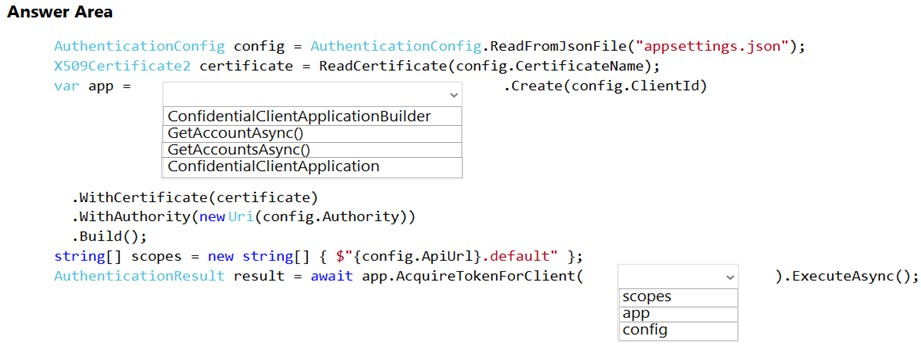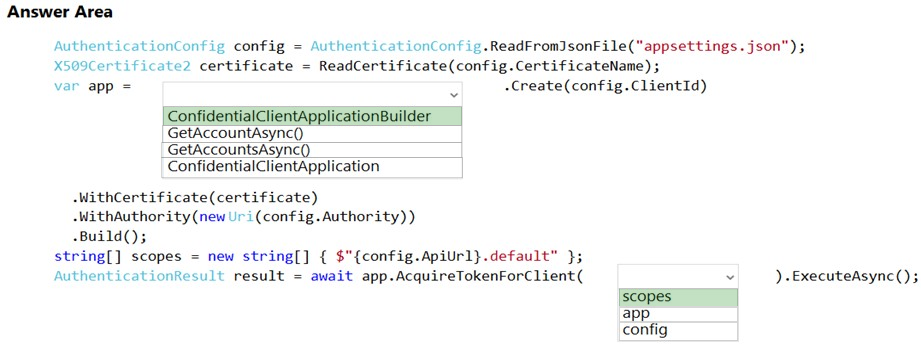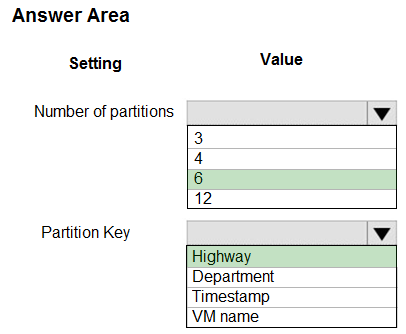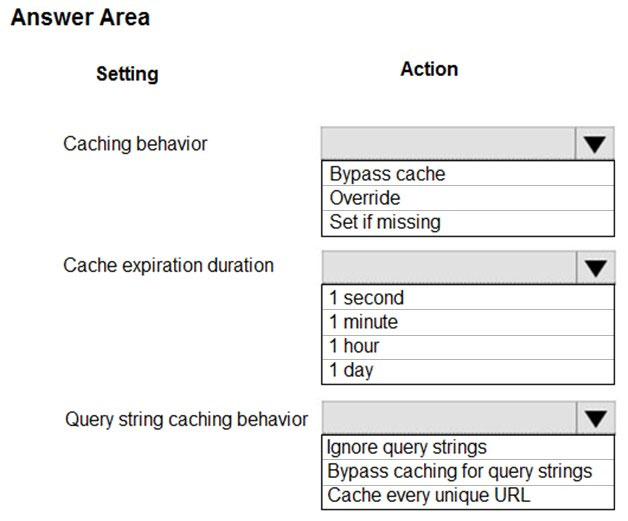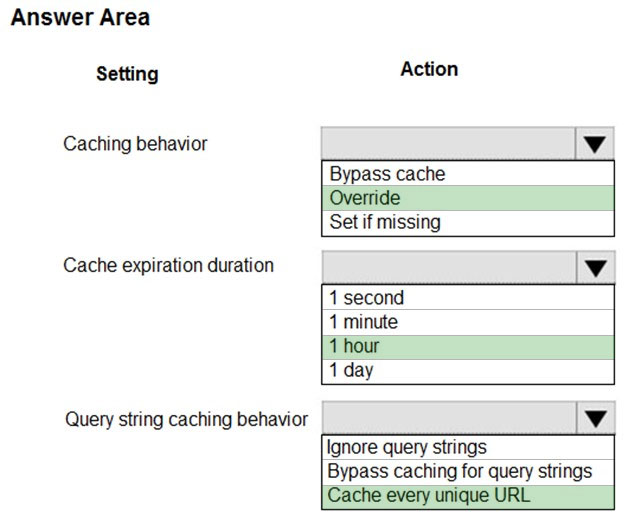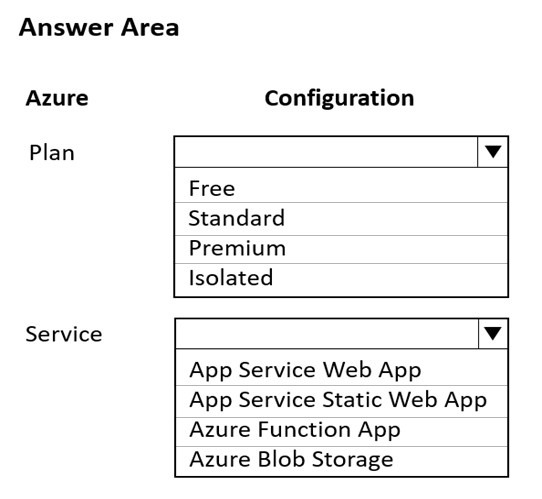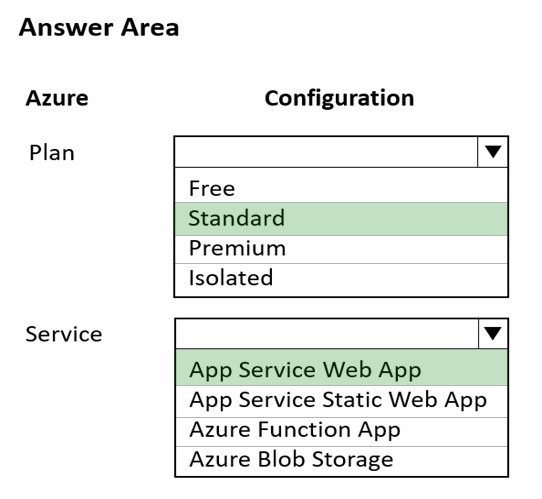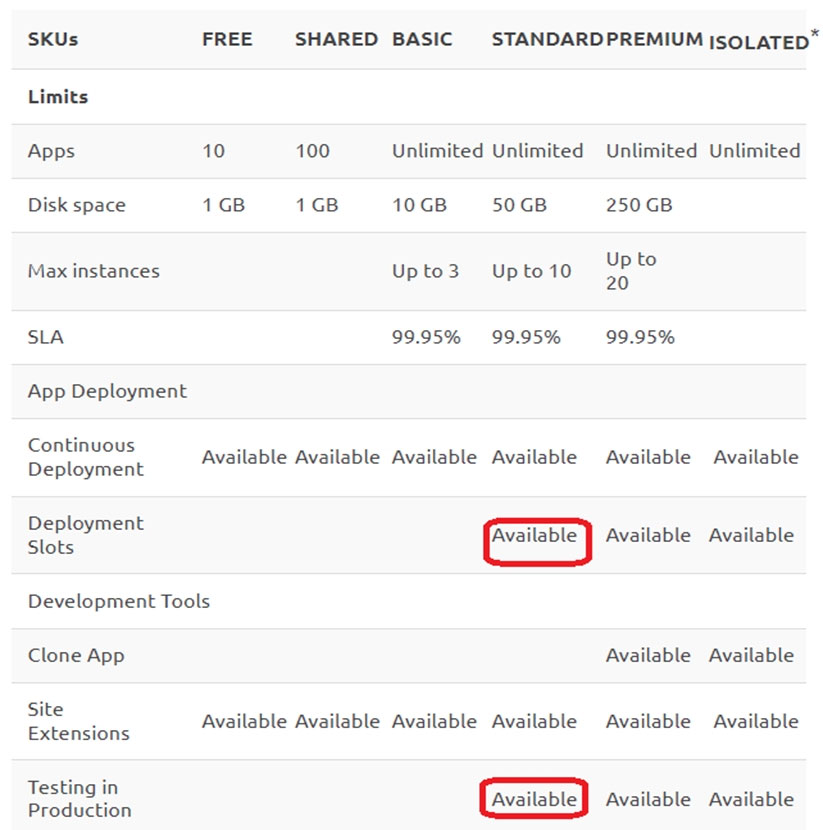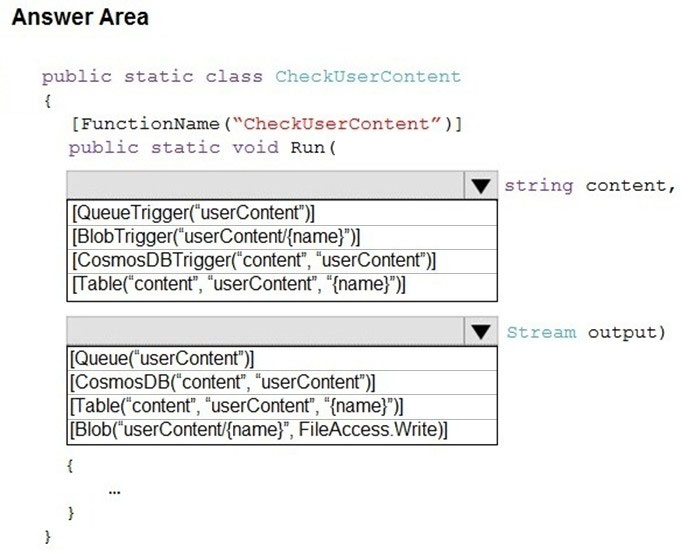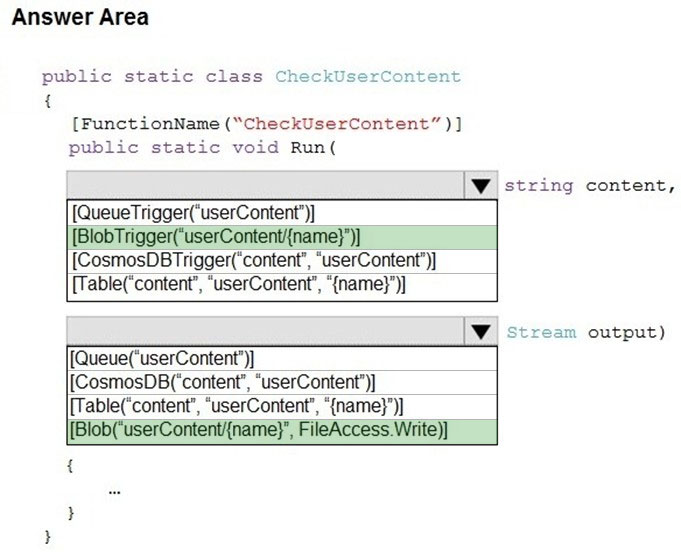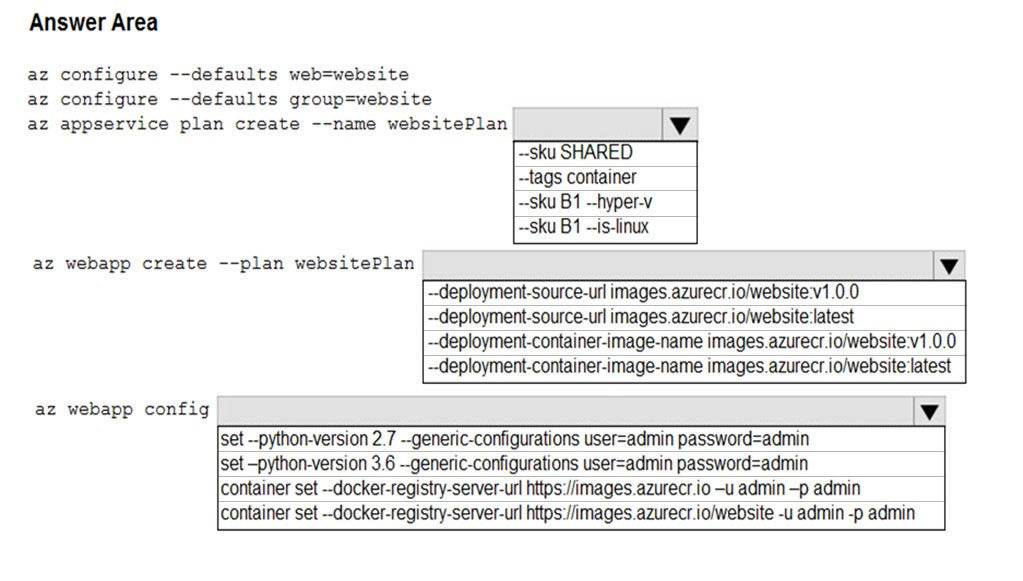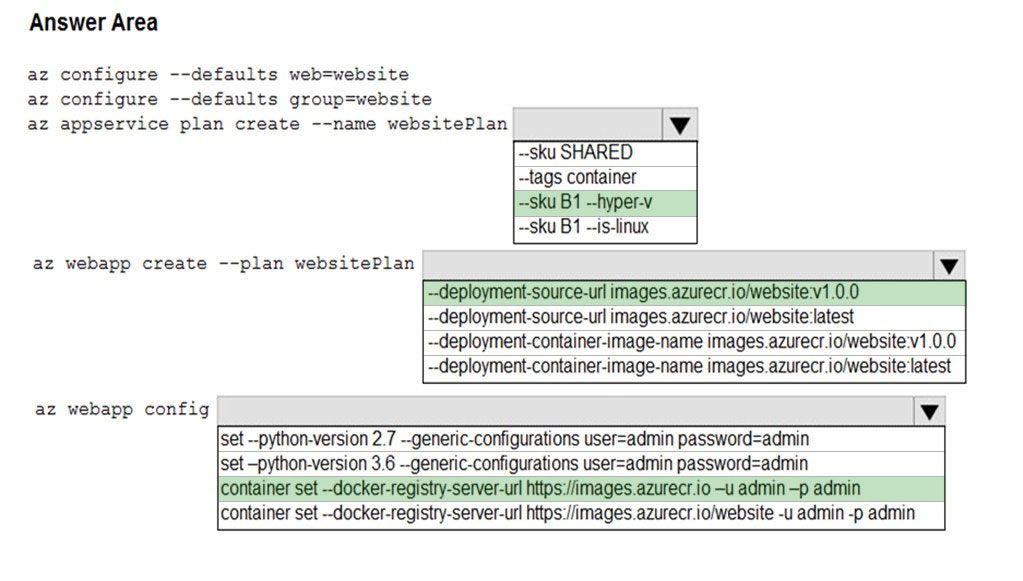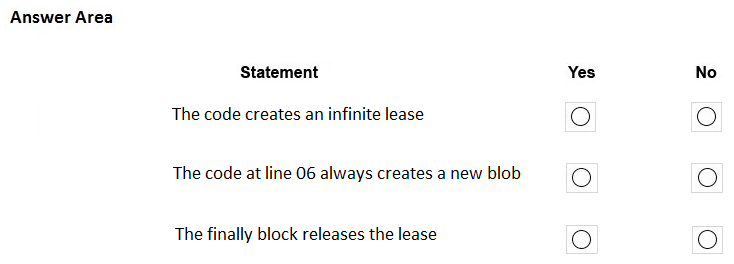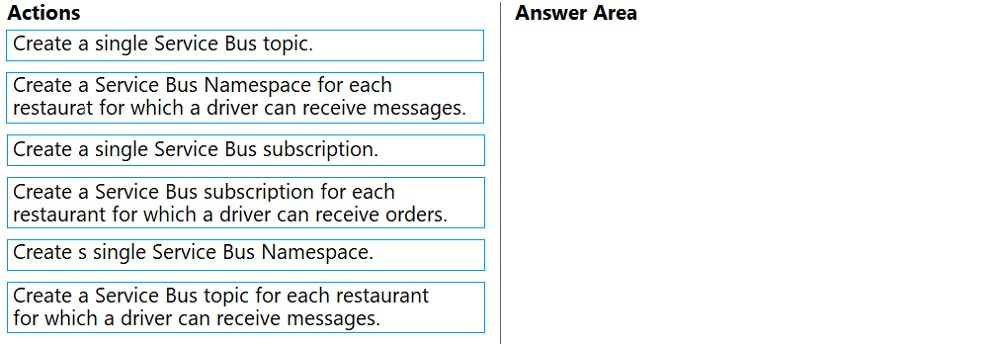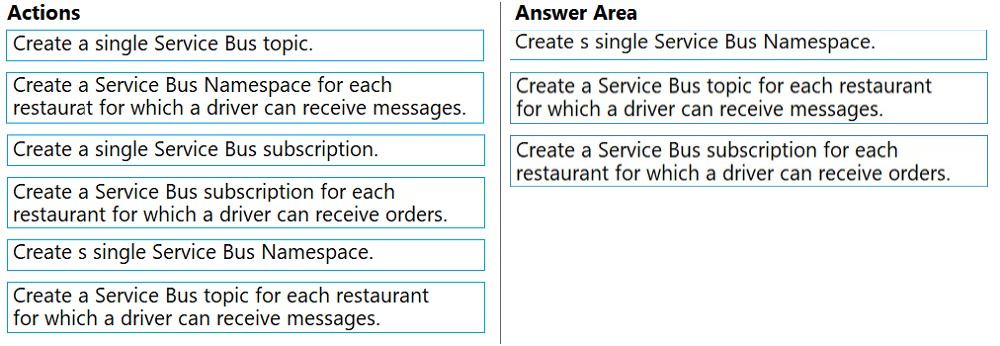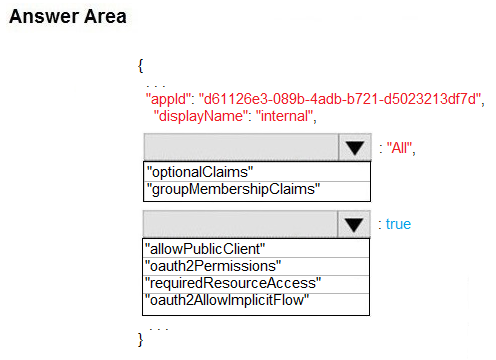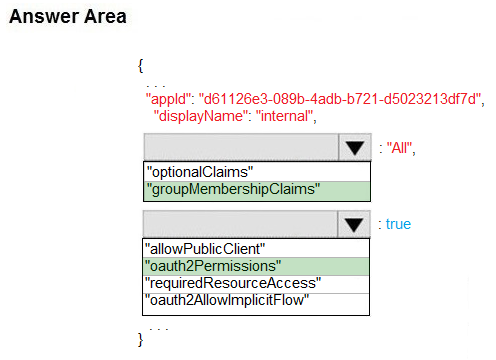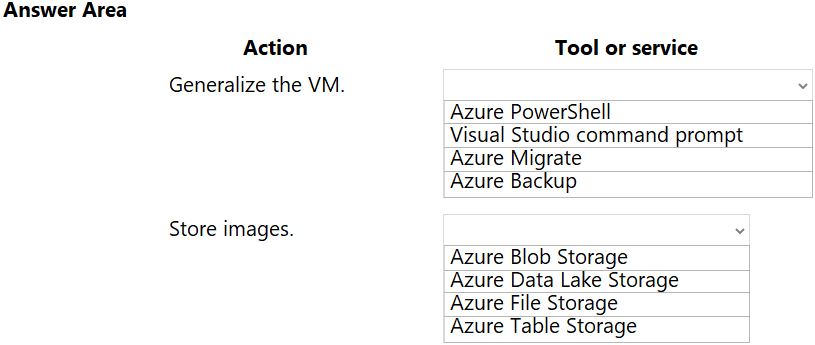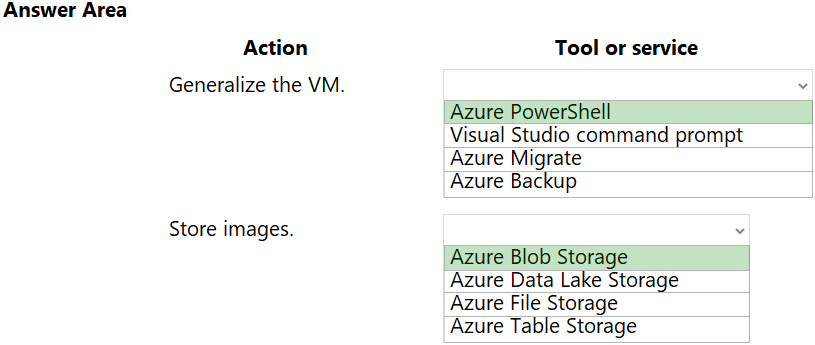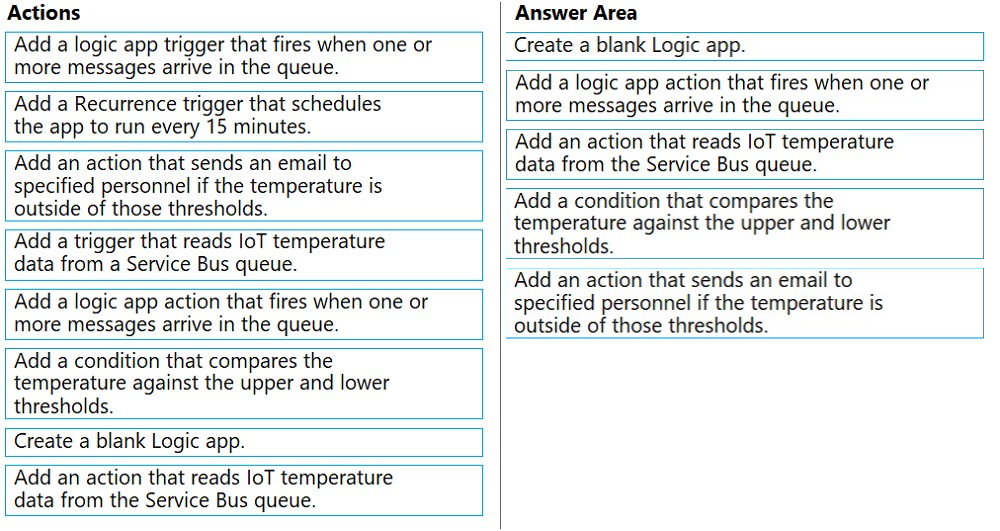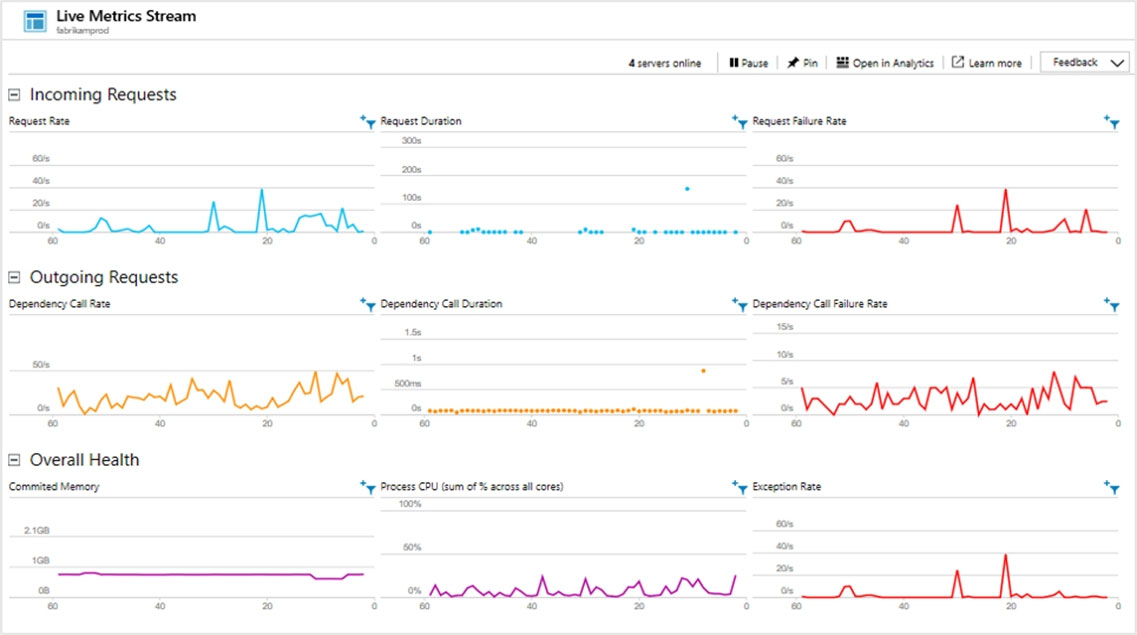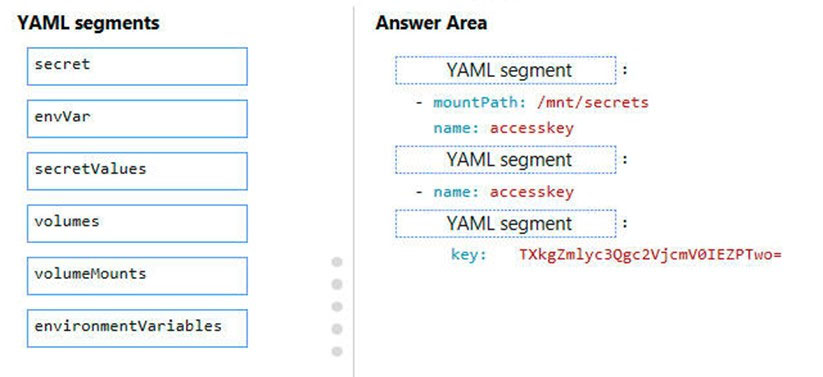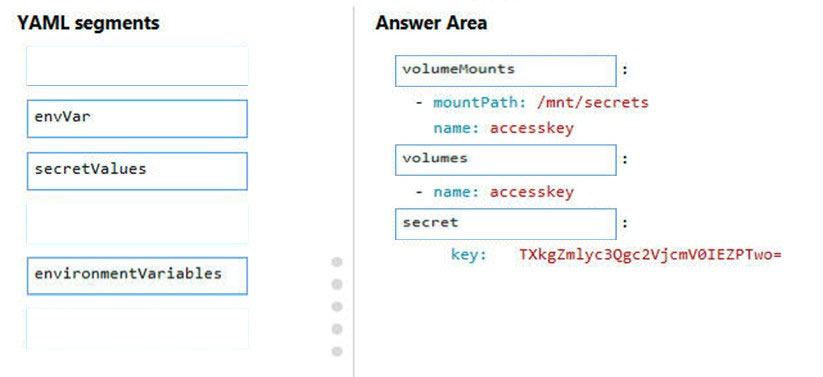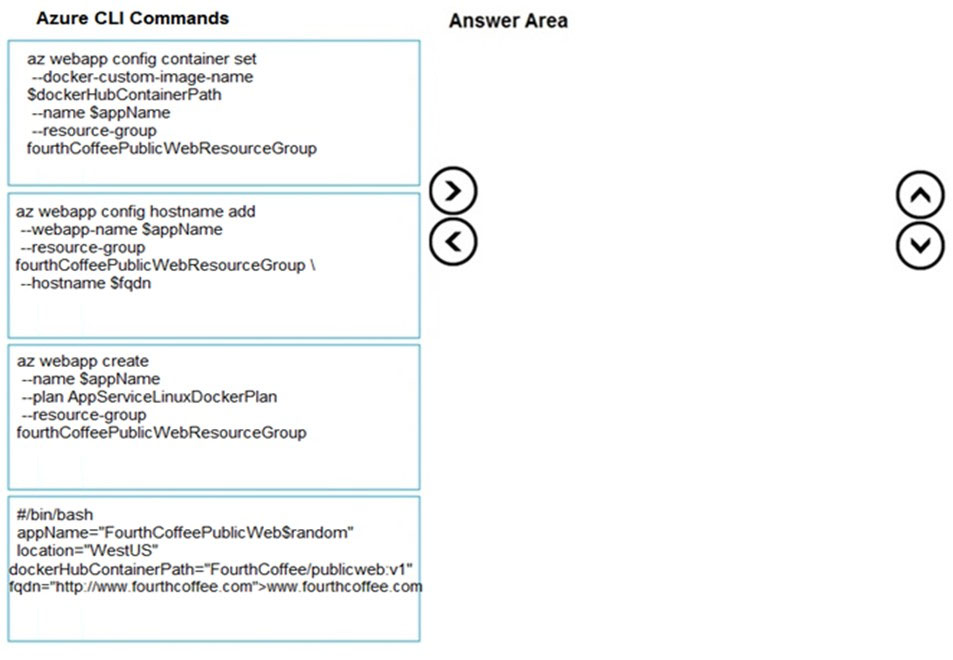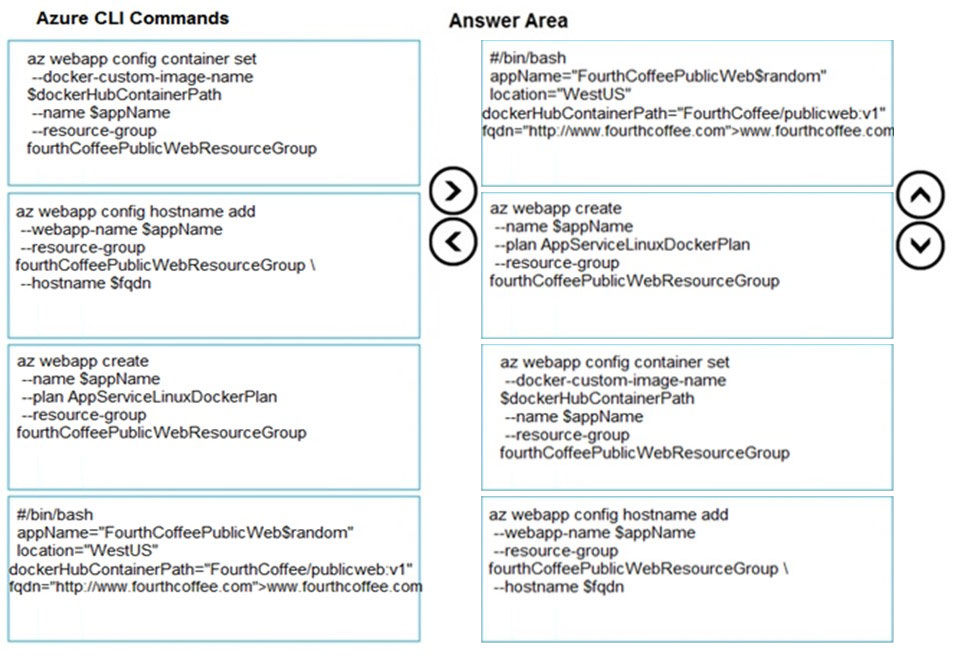AZ-204 Practice Questions Free – 50 Exam-Style Questions to Sharpen Your Skills
Are you preparing for the AZ-204 certification exam? Kickstart your success with our AZ-204 Practice Questions Free – a carefully selected set of 50 real exam-style questions to help you test your knowledge and identify areas for improvement.
Practicing with AZ-204 practice questions free gives you a powerful edge by allowing you to:
- Understand the exam structure and question formats
- Discover your strong and weak areas
- Build the confidence you need for test day success
Below, you will find 50 free AZ-204 practice questions designed to match the real exam in both difficulty and topic coverage. They’re ideal for self-assessment or final review. You can click on each Question to explore the details.
You develop an app that allows users to upload photos and videos to Azure storage. The app uses a storage REST API call to upload the media to a blob storage account named Account1. You have blob storage containers named Container1 and Container2. Uploading of videos occurs on an irregular basis. You need to copy specific blobs from Container1 to Container2 when a new video is uploaded. What should you do?
A. Copy blobs to Container2 by using the Put Blob operation of the Blob Service REST API
B. Create an Event Grid topic that uses the Start-AzureStorageBlobCopy cmdlet
C. Use AzCopy with the Snapshot switch to copy blobs to Container2
D. Download the blob to a virtual machine and then upload the blob to Container2
HOTSPOT - Case study - This is a case study. Case studies are not timed separately. You can use as much exam time as you would like to complete each case. However, there may be additional case studies and sections on this exam. You must manage your time to ensure that you are able to complete all questions included on this exam in the time provided. To answer the questions included in a case study, you will need to reference information that is provided in the case study. Case studies might contain exhibits and other resources that provide more information about the scenario that is described in the case study. Each question is independent of the other questions in this case study. At the end of this case study, a review screen will appear. This screen allows you to review your answers and to make changes before you move to the next section of the exam. After you begin a new section, you cannot return to this section. To start the case study - To display the first question in this case study, click the Next button. Use the buttons in the left pane to explore the content of the case study before you answer the questions. Clicking these buttons displays information such as business requirements, existing environment, and problem statements. When you are ready to answer a question, click the Question button to return to the question. Background - Munson’s Pickles and Preserves Farm is an agricultural cooperative corporation based in Washington, US, with farms located across the United States. The company supports agricultural production resources by distributing seeds fertilizers, chemicals, fuel, and farm machinery to the farms. Current Environment - The company is migrating all applications from an on-premises datacenter to Microsoft Azure. Applications support distributors, farmers, and internal company staff. Corporate website - • The company hosts a public website located at http://www.munsonspicklesandpreservesfarm.com. The site supports farmers and distributors who request agricultural production resources. Farms - • The company created a new customer tenant in the Microsoft Entra admin center to support authentication and authorization for applications. Distributors - • Distributors integrate their applications with data that is accessible by using APIs hosted at http://www.munsonspicklesandpreservesfarm.com/api to receive and update resource data. Requirements - The application components must meet the following requirements: Corporate website - • The site must be migrated to Azure App Service. • Costs must be minimized when hosting in Azure. • Applications must automatically scale independent of the compute resources. • All code changes must be validated by internal staff before release to production. • File transfer speeds must improve, and webpage-load performance must increase. • All site settings must be centrally stored, secured without using secrets, and encrypted at rest and in transit. • A queue-based load leveling pattern must be implemented by using Azure Service Bus queues to support high volumes of website agricultural production resource requests. Farms - • Farmers must authenticate to applications by using Microsoft Entra ID. Distributors - • The company must track a custom telemetry value with each API call and monitor performance of all APIs. • API telemetry values must be charted to evaluate variations and trends for resource data. Internal staff - • App and API updates must be validated before release to production. • Staff must be able to select a link to direct them back to the production app when validating an app or API update. • Staff profile photos and email must be displayed on the website once they authenticate to applications by using their Microsoft Entra ID. Security - • All web communications must be secured by using TLS/HTTPS. • Web content must be restricted by country/region to support corporate compliance standards. • The principle of least privilege must be applied when providing any user rights or process access rights. • Managed identities for Azure resources must be used to authenticate services that support Microsoft Entra ID authentication. Issues - Corporate website - • Farmers report HTTP 503 errors at the same time as internal staff report that CPU and memory usage are high. • Distributors report HTTP 502 errors at the same time as internal staff report that average response times and networking traffic are high. • Internal staff report webpage load sizes are large and take a long time to load. • Developers receive authentication errors to Service Bus when they debug locally. Distributors - • Many API telemetry values are sent in a short period of time. Telemetry traffic, data costs, and storage costs must be reduced while preserving a statistically correct analysis of the data points sent by the APIs. You need to provide internal staff access to the production site after a validation. How should you complete the code segment? To answer, select the appropriate options in the answer area. NOTE: Each correct selection is worth one point.
You are developing a .Net web application that stores data in Azure Cosmos DB. The application must use the Core API and allow millions of reads and writes. The Azure Cosmos DB account has been created with multiple write regions enabled. The application has been deployed to the East US2 and Central US regions. You need to update the application to support multi-region writes. What are two possible ways to achieve this goal? Each correct answer presents part of the solution. NOTE: Each correct selection is worth one point.
A. Update the ConnectionPolicy class for the Cosmos client and populate the PreferredLocations property based on the geo-proximity of the application.
B. Update Azure Cosmos DB to use the Strong consistency level. Add indexed properties to the container to indicate region.
C. Update the ConnectionPolicy class for the Cosmos client and set the UseMultipleWriteLocations property to true.
D. Create and deploy a custom conflict resolution policy.
E. Update Azure Cosmos DB to use the Session consistency level. Send the SessionToken property value from the FeedResponse object of the write action to the end-user by using a cookie.
You develop a web application that provides access to legal documents that are stored on Azure Blob Storage with version-level immutability policies. Documents are protected with both time-based policies and legal hold policies. All time-based retention policies have the AllowProtectedAppendWrites property enabled. You have a requirement to prevent the user from attempting to perform operations that would fail only when a legal hold is in effect and when all other policies are expired. You need to meet the requirement. Which two operations should you prevent? Each correct answer presents a complete solution. NOTE: Each correct selection is worth one point.
A. adding data to documents
B. deleting documents
C. creating documents
D. overwriting existing documents
You are developing a .NET Core MVC application that allows customers to research independent holiday accommodation providers. You want to implement Azure Search to allow the application to search the index by using various criteria to locate documents related to accommodation. You want the application to allow customers to search the index by using regular expressions. What should you do?
A. Configure the SearchMode property of the SearchParameters class.
B. Configure the QueryType property of the SearchParameters class.
C. Configure the Facets property of the SearchParameters class.
D. Configure the Filter property of the SearchParameters class.
HOTSPOT - You are developing a web application that makes calls to the Microsoft Graph API. You register the application in the Azure portal and upload a valid X509 certificate. You create an appsettings.json file containing the certificate name, client identifier for the application, and the tenant identifier of the Azure Active Directory (Azure AD). You create a method named ReadCertificate to return the X509 certificate by name. You need to implement code that acquires a token by using the certificate. How should you complete the code segment? To answer, select the appropriate options in the answer area. NOTE: Each correct selection is worth one point. Hot Area:
You are developing a web application that uses the Microsoft identity platform for user and resource authentication. The web application calls several REST APIs. A REST API call must read the user’s calendar. The web application requires permission to send an email as the user. You need to authorize the web application and the API. Which parameter should you use?
A. tenant
B. code_challenge
C. state
D. client_id
E. scope
DRAG DROP - You need to ensure disaster recovery requirements are met. What code should you add at line PC16? To answer, drag the appropriate code fragments to the correct locations. Each code fragment may be used once, more than once, or not at all. You may need to drag the split bar between panes or scroll to view content. NOTE: Each correct selection is worth one point. Select and Place:
You are developing a solution for a public facing API. The API back end is hosted in an Azure App Service instance. You have implemented a RESTful service for the API back end. You must configure back-end authentication for the API Management service instance. Solution: You configure Basic gateway credentials for the HTTP(s) endpoint. Does the solution meet the goal?
A. Yes
B. No
Your company has a web app named WebApp1. You use the WebJobs SDK to design a triggered App Service background task that automatically invokes a function in the code every time new data is received in a queue. You are preparing to configure the service processes a queue data item. Which of the following is the service you should use?
A. Logic Apps
B. WebJobs
C. Flow
D. Functions
HOTSPOT - You are building a traffic monitoring system that monitors traffic along six highways. The system produces time series analysis-based reports for each highway. Data from traffic sensors are stored in Azure Event Hub. Traffic data is consumed by four departments. Each department has an Azure Web App that displays the time series-based reports and contains a WebJob that processes the incoming data from Event Hub. All Web Apps run on App Service Plans with three instances. Data throughput must be maximized. Latency must be minimized. You need to implement the Azure Event Hub. Which settings should you use? To answer, select the appropriate options in the answer area. NOTE: Each correct selection is worth one point. Hot Area:
HOTSPOT - You develop a web app that interacts with Azure Active Directory (Azure AD) groups by using Microsoft Graph. You build a web page that shows all Azure AD groups that are not of the type 'Unified'. You need to build the Microsoft Graph query for the page. How should you complete the query? To answer, select the appropriate options in the answer area. NOTE: Each correct selection is worth one point.
HOTSPOT - You are developing an Azure Function app. The Azure Function app must enable a WebHook to read an image from Azure Blob Storage and create a new Azure Cosmos DB document. You need to implement the Azure Function app. Which configuration should you use? To answer, select the appropriate options in the answer area. NOTE: Each correct selection is worth one point.
HOTSPOT - You are developing an Azure App Service hosted ASP.NET Core web app to deliver video-on-demand streaming media. You enable an Azure Content Delivery Network (CDN) Standard for the web endpoint. Customer videos are downloaded from the web app by using the following example URL: http://www.contoso.com/ content.mp4?quality=1. All media content must expire from the cache after one hour. Customer videos with varying quality must be delivered to the closest regional point of presence (POP) node. You need to configure Azure CDN caching rules. Which options should you use? To answer, select the appropriate options in the answer area. NOTE: Each correct selection is worth one point. Hot Area:
HOTSPOT - You are developing a solution that uses several Azure Service Bus queues. You create an Azure Event Grid subscription for the Azure Service Bus namespace. You use Azure Functions as subscribers to process the messages. You need to emit events to Azure Event Grid from the queues. You must use the principal of least privilege and minimize costs. Which Azure Service Bus values should you use? To answer, select the appropriate options in the answer area. NOTE: Each correct selection is worth one point.
HOTSPOT - You need to implement the corporate website. How should you configure the solution? To answer, select the appropriate options in the answer area. NOTE: Each correct selection is worth one point. Hot Area:
HOTSPOT - You need to implement the bindings for the CheckUserContent function. How should you complete the code segment? To answer, select the appropriate options in the answer area. NOTE: Each correct selection is worth one point. Hot Area:
You are developing several microservices to deploy to a new Azure Kubernetes Service cluster. The microservices manage data stored in Azure Cosmos DB and Azure Blob storage. The data is secured by using customer-managed keys stored in Azure Key Vault. You must automate key rotation for all Azure Key Vault keys and allow for manual key rotation. Keys must rotate every three months. Notifications of expiring keys must be sent before key expiry. You need to configure key rotation and enable key expiry notifications. Which two actions should you perform? Each correct answer presents part of the solution. NOTE: Each correct selection is worth one point.
A. Create and configure a new Azure Event Grid instance.
B. Configure Azure Key Vault alerts.
C. Create and assign an Azure Key Vault access policy.
D. Create and configure a key rotation policy during key creation.
HOTSPOT - You are preparing to deploy a Python website to an Azure Web App using a container. The solution will use multiple containers in the same container group. The Dockerfile that builds the container is as follows:You build a container by using the following command. The Azure Container Registry instance named images is a private registry.
The user name and password for the registry is admin. The Web App must always run the same version of the website regardless of future builds. You need to create an Azure Web App to run the website. How should you complete the commands? To answer, select the appropriate options in the answer area. NOTE: Each correct selection is worth one point. Hot Area:
DRAG DROP - You are developing an ASP.NET Core website that can be used to manage photographs which are stored in Azure Blob Storage containers. Users of the website authenticate by using their Azure Active Directory (Azure AD) credentials. You implement role-based access control (RBAC) role permissions on the containers that store photographs. You assign users to RBAC roles. You need to configure the website's Azure AD Application so that user's permissions can be used with the Azure Blob containers. How should you configure the application? To answer, drag the appropriate setting to the correct location. Each setting can be used once, more than once, or not at all. You may need to drag the split bar between panes or scroll to view content. NOTE: Each correct selection is worth one point. Select and Place:
DRAG DROP - You need to ensure that PolicyLib requirements are met. How should you complete the code segment? To answer, drag the appropriate code segments to the correct locations. Each code segment may be used once, more than once, or not at all. You may need to drag the split bar between panes or scroll to view content. NOTE: Each correct selection is worth one point. Select and Place:
You are creating a hazard notification system that has a single signaling server which triggers audio and visual alarms to start and stop. You implement Azure Service Bus to publish alarms. Each alarm controller uses Azure Service Bus to receive alarm signals as part of a transaction. Alarm events must be recorded for audit purposes. Each transaction record must include information about the alarm type that was activated. You need to implement a reply trail auditing solution. Which two actions should you perform? Each correct answer presents part of the solution. NOTE: Each correct selection is worth one point.
A. Assign the value of the hazard message SessionID property to the ReplyToSessionId property.
B. Assign the value of the hazard message MessageId property to the DevileryCount property.
C. Assign the value of the hazard message SessionID property to the SequenceNumber property.
D. Assign the value of the hazard message MessageId property to the CorrelationId property.
E. Assign the value of the hazard message SequenceNumber property to the DeliveryCount property.
F. Assign the value of the hazard message MessageId property to the SequenceNumber property.
HOTSPOT - You are developing several microservices to run on Azure Container Apps. External HTTP ingress traffic has been enabled for the microservices. A deployed microservice must be updated to allow users to test new features. You have the following requirements: • Enable and maintain a single URL for the updated microservice to provide to test users. • Update the microservice that corresponds to the current microservice version. You need to configure Azure Container Apps. Which features should you configure? To answer, select the appropriate options in the answer area. NOTE: Each correct selection is worth one point.
After you answer a question in this section, you will NOT be able to return to it. As a result, these questions will not appear in the review screen. You deploy an Azure Container Apps app and disable ingress on the container app. Users report that they are unable to access the container app. You investigate and observe that the app has scaled to 0 instances. You need to resolve the issue with the container app. Solution: Enable ingress, create an HTTP scale rule, and apply the rule to the container app. Does the solution meet the goal?
A. Yes
B. No
You develop Azure solutions. You must connect to a No-SQL globally-distributed database by using the .NET API. You need to create an object to configure and execute requests in the database. Which code segment should you use?
A. new Container(EndpointUri, PrimaryKey);
B. new Database(EndpointUri, PrimaryKey);
C. new CosmosClient(EndpointUri, PrimaryKey);
You are developing an Azure-based web application. The application goes offline periodically to perform offline data processing. While the application is offline, numerous Azure Monitor alerts fire which result in the on-call developer being paged. The application must always log when the application is offline for any reason. You need to ensure that the on-call developer is not paged during offline processing. What should you do?
A. Add Azure Monitor alert processing rules to suppress notifications.
B. Disable Azure Monitor Service Health Alerts during offline processing.
C. Create an Azure Monitor Metric Alert.
D. Build an Azure Monitor action group that suppresses the alerts.
DRAG DROP - You need to add code at line PC32 in Processing.cs to implement the GetCredentials method in the Processing class. How should you complete the code? To answer, drag the appropriate code segments to the correct locations. Each code segment may be used once, more than once, or not at all. You may need to drag the split bar between panes or scroll to view content. NOTE: Each correct selection is worth one point. Select and Place:
You create and publish a new Azure App Service web app. User authentication and authorization must use Azure Active Directory (Azure AD). You need to configure authentication and authorization. What should you do first?
A. Add an identity provider.
B. Map an existing custom DNS name.
C. Create and configure a new app setting.
D. Add a private certificate.
E. Create and configure a managed identity.
HOTSPOT - You are developing a solution that uses the Azure Storage Client library for .NET. You have the following code: (Line numbers are included for reference only.)For each of the following statements, select Yes if the statement is true. Otherwise, select No. NOTE: Each correct selection is worth one point. Hot Area:
DRAG DROP - You develop software solutions for a mobile delivery service. You are developing a mobile app that users can use to order from a restaurant in their area. The app uses the following workflow: 1. A driver selects the restaurants for which they will deliver orders. 2. Orders are sent to all available drivers in an area. 3. Only orders for the selected restaurants will appear for the driver. 4. The first driver to accept an order removes it from the list of available orders. You need to implement an Azure Service Bus solution. Which three actions should you perform in sequence? To answer, move the appropriate actions from the list of actions to the answer area and arrange them in the correct order. Select and Place:
A development team is creating a new REST API. The API will store data in Azure Blob storage. You plan to deploy the API to Azure App Service. Developers must access the Azure Blob storage account to develop the API for the next two months. The Azure Blob storage account must not be accessible by the developers after the two-month time period. You need to grant developers access to the Azure Blob storage account. What should you do?
A. Generate a shared access signature (SAS) for the Azure Blob storage account and provide the SAS to all developers.
B. Create and apply a new lifecycle management policy to include a last accessed date value. Apply the policy to the Azure Blob storage account.
C. Provide all developers with the access key for the Azure Blob storage account. Update the API to include the Coordinated Universal Time (UTC) timestamp for the request header.
D. Grant all developers access to the Azure Blob storage account by assigning role-based access control (RBAC) roles.
You are developing an Azure Function that calls external APIs by providing an access token for the API. The access token is stored in a secret named token in an Azure Key Vault named mykeyvault. You need to ensure the Azure Function can access to the token. Which value should you store in the Azure Function App configuration?
A. KeyVault:mykeyvault;Secret:token
B. App:Settings:Secret:mykeyvault:token
C. AZUREKVCONNSTR_ https://mykeyveult.vault.ezure.net/secrets/token/
D. @Microsoft.KeyVault(SecretUri=https://mykeyvault.vault.azure.net/secrets/token/)
Your company is developing an Azure API hosted in Azure. You need to implement authentication for the Azure API to access other Azure resources. You have the following requirements: ✑ All API calls must be authenticated. ✑ Callers to the API must not send credentials to the API. Which authentication mechanism should you use?
A. Basic
B. Anonymous
C. Managed identity
D. Client certificate
After you answer a question in this section, you will NOT be able to return to it. As a result, these questions will not appear in the review screen. You are developing a website that will run as an Azure Web App. Users will authenticate by using their Azure Active Directory (Azure AD) credentials. You plan to assign users one of the following permission levels for the website: admin, normal, and reader. A user's Azure AD group membership must be used to determine the permission level. You need to configure authorization. Solution: Configure the Azure Web App for the website to allow only authenticated requests and require Azure AD log on. Does the solution meet the goal?
A. Yes
B. No
You need to access data from the user claim object in the e-commerce web app. What should you do first?
A. Write custom code to make a Microsoft Graph API call from the e-commerce web app.
B. Assign the Contributor RBAC role to the e-commerce web app by using the Resource Manager create role assignment API.
C. Update the e-commerce web app to read the HTTP request header values.
D. Using the Azure CLI, enable Cross-origin resource sharing (CORS) from the e-commerce checkout API to the e-commerce web app.
HOTSPOT - You are building a website to access project data related to teams within your organization. The website does not allow anonymous access. Authentication is performed using an Azure Active Directory (Azure AD) app named internal. The website has the following authentication requirements: ✑ Azure AD users must be able to login to the website. ✑ Personalization of the website must be based on membership in Active Directory groups. You need to configure the application's manifest to meet the authentication requirements. How should you configure the manifest? To answer, select the appropriate configuration in the answer area. NOTE: Each correct selection is worth one point. Hot Area:
DRAG DROP - You are developing a solution for a hospital to support the following use cases: ✑ The most recent patient status details must be retrieved even if multiple users in different locations have updated the patient record. ✑ Patient health monitoring data retrieved must be the current version or the prior version. ✑ After a patient is discharged and all charges have been assessed, the patient billing record contains the final charges. You provision a Cosmos DB NoSQL database and set the default consistency level for the database account to Strong. You set the value for Indexing Mode to Consistent. You need to minimize latency and any impact to the availability of the solution. You must override the default consistency level at the query level to meet the required consistency guarantees for the scenarios. Which consistency levels should you implement? To answer, drag the appropriate consistency levels to the correct requirements. Each consistency level may be used once, more than once, or not at all. You may need to drag the split bar between panes or scroll to view content. NOTE: Each correct selection is worth one point. Select and Place:
HOTSPOT - You are configuring a development environment for your team. You deploy the latest Visual Studio image from the Azure Marketplace to your Azure subscription. The development environment requires several software development kits (SDKs) and third-party components to support application development across the organization. You install and customize the deployed virtual machine (VM) for your development team. The customized VM must be saved to allow provisioning of a new team member development environment. You need to save the customized VM for future provisioning. Which tools or services should you use? To answer, select the appropriate options in the answer area. NOTE: Each correct selection is worth one point. Hot Area:
DRAG DROP - A company has multiple warehouses. Each warehouse contains IoT temperature devices which deliver temperature data to an Azure Service Bus queue. You need to send email alerts to facility supervisors immediately if the temperature at a warehouse goes above or below specified threshold temperatures. Which five actions should you perform in sequence? To answer, move the appropriate actions from the list of actions to the answer area and arrange them in the correct order. Select and Place:
You have an application that includes an Azure Web app and several Azure Function apps. Application secrets including connection strings and certificates are stored in Azure Key Vault. Secrets must not be stored in the application or application runtime environment. Changes to Azure Active Directory (Azure AD) must be minimized. You need to design the approach to loading application secrets. What should you do?
A. Create a single user-assigned Managed Identity with permission to access Key Vault and configure each App Service to use that Managed Identity.
B. Create a single Azure AD Service Principal with permission to access Key Vault and use a client secret from within the App Services to access Key Vault.
C. Create a system assigned Managed Identity in each App Service with permission to access Key Vault.
D. Create an Azure AD Service Principal with Permissions to access Key Vault for each App Service and use a certificate from within the App Services to access Key Vault.
You develop and deploy an Azure App Service web app to a production environment. You enable the Always On setting and the Application Insights site extensions. You deploy a code update and receive multiple failed requests and exceptions in the web app. You need to validate the performance and failure counts of the web app in near real time. Which Application Insights tool should you use?
A. Profiler
B. Smart Detection
C. Live Metrics Stream
D. Application Map
E. Snapshot Debugger
After you answer a question in this section, you will NOT be able to return to it. As a result, these questions will not appear in the review screen. You are developing an Azure solution to collect point-of-sale (POS) device data from 2,000 stores located throughout the world. A single device can produce 2 megabytes (MB) of data every 24 hours. Each store location has one to five devices that send data. You must store the device data in Azure Blob storage. Device data must be correlated based on a device identifier. Additional stores are expected to open in the future. You need to implement a solution to receive the device data. Solution: Provision an Azure Event Grid. Configure event filtering to evaluate the device identifier. Does the solution meet the goal?
A. Yes
B. No
HOTSPOT - You are developing a static website hosted on Azure Blob Storage. You create a storage account and enable static website hosting. The website must support the following requirements: • Custom domain name • Custom header values for all responses • Custom SSL certificate You need to implement the static website. What should you configure? To answer, select the appropriate values in the answer area. NOTE: Each correct selection is worth one point.
DRAG DROP - You need to add YAML markup at line CS17 to ensure that the ContentUploadService can access Azure Storage access keys. How should you complete the YAML markup? To answer, drag the appropriate YAML segments to the correct locations. Each YAML segment may be used once, more than once, or not at all. You may need to drag the split bar between panes or scroll to view content. NOTE: Each correct selection is worth one point. Select and Place:
HOTSPOT - You develop a Python application for image rendering. The application uses GPU resources to optimize rendering processes. You have the following requirements: • The application must be deployed to a Linux container. • The container must be stopped when the image rendering is complete. • The solution must minimize cost. You need to deploy the application to Azure.
DRAG DROP - You are developing an Azure solution. You need to develop code to access a secret stored in Azure Key Vault. How should you complete the code segment? To answer, drag the appropriate code segments to the correct location. Each code segment may be used once, more than once, or not at all. You may need to drag the split bar between panes or scroll to view content. NOTE: Each correct selection is worth one point. Select and Place:
After you answer a question in this section, you will NOT be able to return to it. As a result, these questions will not appear in the review screen. You deploy an Azure Container Apps app and disable ingress on the container app. Users report that they are unable to access the container app. You investigate and observe that the app has scaled to 0 instances. You need to resolve the issue with the container app. Solution: Enable ingress, create a custom scale rule, and apply the rule to the container app. Does the solution meet the goal?
A. Yes
B. No
DRAG DROP - You are developing an Azure solution. You need to develop code to access a secret stored in Azure Key Vault. How should you complete the code segment? To answer, drag the appropriate code segments to the correct location. Each code segment may be used once, more than once, or not at all. You may need to drag the split bar between panes or scroll to view content. NOTE: Each correct selection is worth one point.
DRAG DROP - Fourth Coffee has an ASP.NET Core web app that runs in Docker. The app is mapped to the www.fourthcoffee.com domain. Fourth Coffee is migrating this application to Azure. You need to provision an App Service Web App to host this docker image and map the custom domain to the App Service web app. A resource group named FourthCoffeePublicWebResourceGroup has been created in the WestUS region that contains an App Service Plan named AppServiceLinuxDockerPlan. Which order should the CLI commands be used to develop the solution? To answer, move all of the Azure CLI commands from the list of commands to the answer area and arrange them in the correct order. Select and Place:
After you answer a question in this section, you will NOT be able to return to it. As a result, these questions will not appear in the review screen. You develop and deploy an Azure App Service API app to a Windows-hosted deployment slot named Development. You create additional deployment slots named Testing and Production. You enable auto swap on the Production deployment slot. You need to ensure that scripts run and resources are available before a swap operation occurs. Solution: Disable auto swap. Update the app with a method named statuscheck to run the scripts. Re-enable auto swap and deploy the app to the Production slot. Does the solution meet the goal?
A. No
B. Yes
Free Access Full AZ-204 Practice Questions Free
Want more hands-on practice? Click here to access the full bank of AZ-204 practice questions free and reinforce your understanding of all exam objectives.
We update our question sets regularly, so check back often for new and relevant content.
Good luck with your AZ-204 certification journey!




